Workbench
Peter Marriott discusses simple ways of capturing the look of the most romantic of seasons.
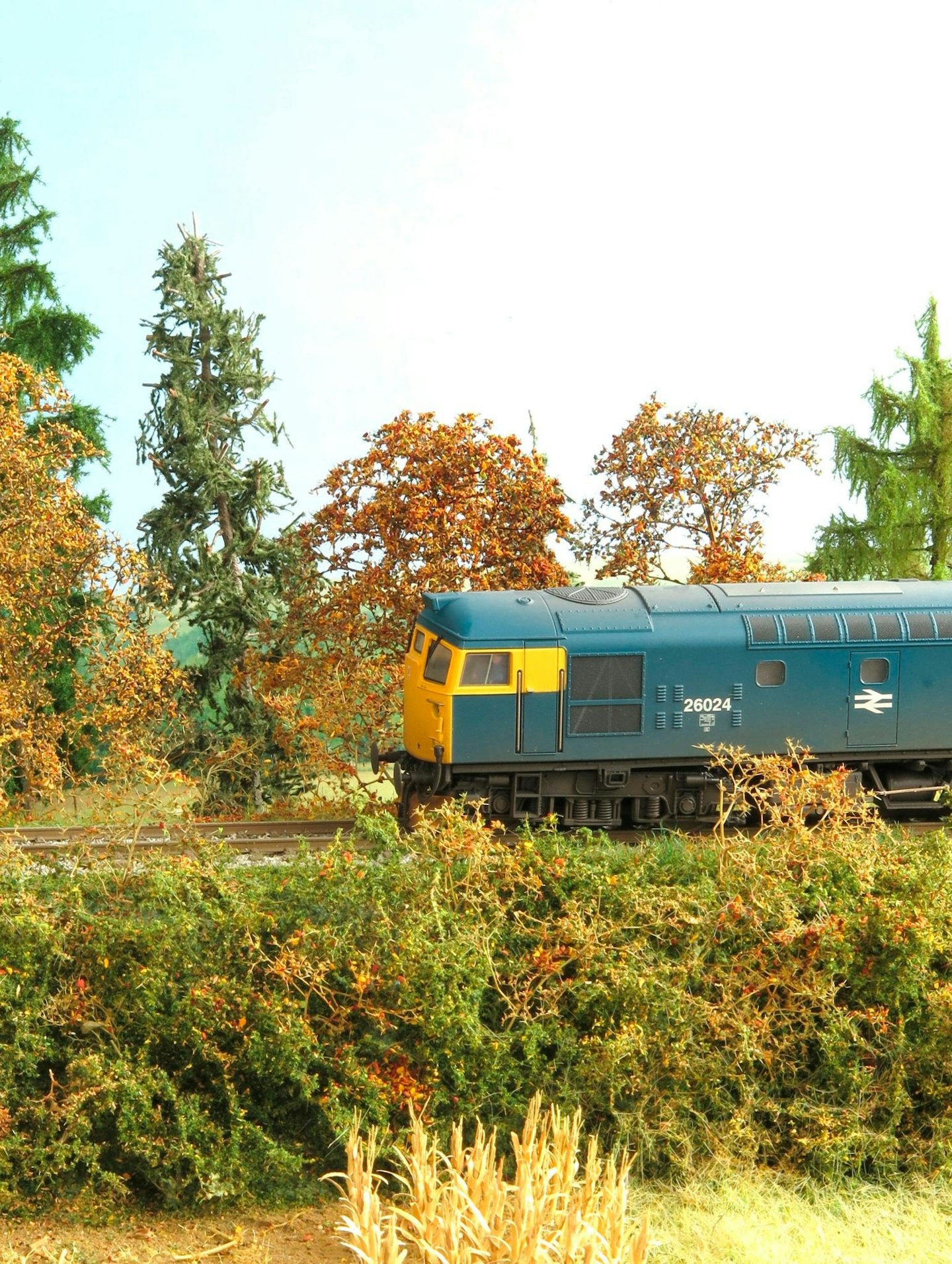
PHOTOGRAPHY: PETER MARRIOTT

Poet John Keats described autumn as “the season of mists and mellow fruitfulness”, summing up the romantic nature of this time of year, as we say goodbye to summer and start preparing ourselves for winter.
The shift from verdant green landscapes to more earthy, russet tones offers modellers a wonderful opportunity to create stunning scenic work. Arguably, though, it’s difficult to replicate a ‘typical autumn scene’, due to different areas of the UK experiencing the season in slightly different ways.
In more northerly climbs, for instance, autumn can feel compressed, with the onset of winter coming sooner compared to more temperate areas of the south. A longer, milder and drier autumn typically leads to trees and vegetation turning through different shades of yellows, reds and browns at a more leisurely pace. But then, in our unpredictable British climate, no two years are the same!
Certain aspects of autumn are consistent, however, including:
◆ Leaves turning from green to russet red and brown – surely one of nature’s most splendid sights. Deciduous trees may lose all their leaves once winter sets in, but evergreen trees often look the same all year. Some coniferous trees, such as larch, do change colour with the seasons.
◆ Grass and weeds change to a tired brown.
◆ Hedgerows initially become a fest of colour, with berries and fruits ripening, before the foliage turns from deep green to a variety of yellows, browns and reds.
◆ Farmers will be busy harvesting their crops and baling hay in the fields. Orchards will have windfall fruit on the ground and fruit pickers may be busy in the fields in early autumn.
SUITABLE PRODUCTS
There is an expanding selection of products from numerous manufacturers that enable an autumnal scene to be reproduced in miniature. There are plenty of scatter and leaf material packs in various autumnal colours, although I’d recommend using these sparingly, as the effect can easily become too vivid and unnatural.
Model trees, in ready-made or kit form, are offered in autumnal colours and a little time spent searching model suppliers’ websites will reveal suitable printed photographic backscenes, featuring trees and vegetation turning towards brown and shedding leaves, while ready-to-lay grass mats – from the likes of Busch, Faller, Model Scene and Noch – feature grass fibres of various heights and autumnal colours and textures. Some are also enhanced by fallen branches and coarse ground cover.
Busch, JTT, Noch and Scalelink offer a good selection of miniature crops, late-blooming flowers and other seasonal vegetation, including dried corn, grape vines and wheat fields ready for harvest. Even mushrooms are available for 4mm scale, courtesy of Busch.
Dried tea leaves offer a great way to replicate fallen leaves, whether in a garden, countryside or woodland setting. Once the tea has been brewed, sprinkle the loose leaves on a piece of kitchen tissue and allow them to dry out. Fallen leaves eventually become brittle as they dry out, so the tea leaves can be crushed to make excellent scatter material, which is perfect for laying around the bases of trees.
So many of us modellers default to replicating summer or springtime scenes on our layouts, but autumn can be one of the most distinctive and visually striking seasons. These days, it’s easier than ever to find helpful scenic products to suit an autumnal scene, and trying something a little different will not only challenge you as a modeller but will lead to your layout standing out from the crowd.
Why not give it a try this autumn, making the most of the changing season to get out and about to study the real world, before trialling some new materials on a small diorama as a test bed. Here are a few practical hints and tips to help get you started…
What you will need
TOOLS
◆ Knife and spare blades
◆ Tweezers
◆ Paintbrushes
◆ Electrostatic static grass planting tool
TOP TIPS FOR AN AUTUMN LANDSCAPE
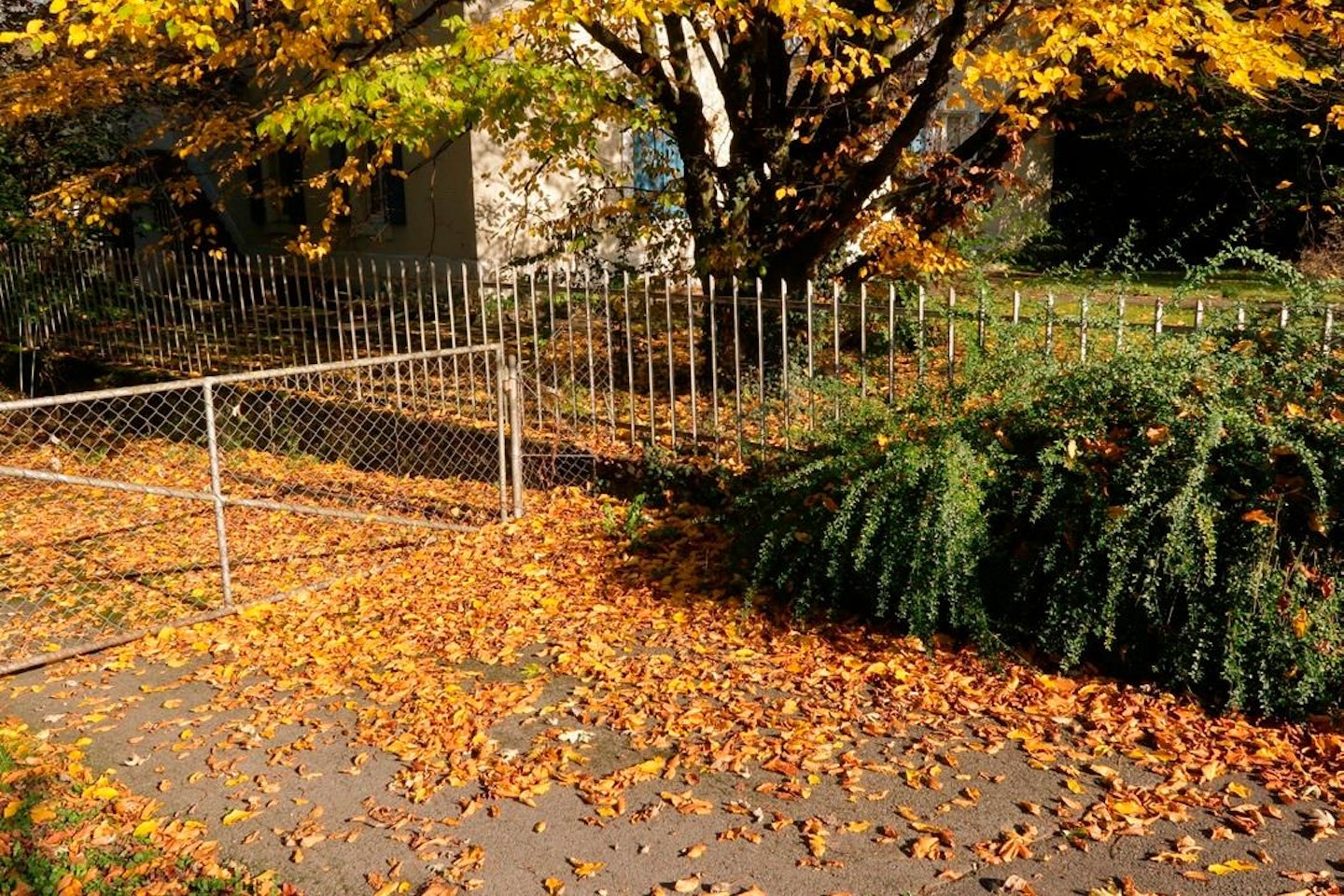
◆ Fallen leaves – sprinkle leaf scatter material onto wet adhesive, at the base of autumnal trees, pavements and around the edges of fields or other areas where they may collect, blown by the wind.
◆ Deciduous trees – if you want to add bare deciduous trees to your layout, sea moss that has been sprayed with dark grey paint is a good way to represent bare trees.
◆ At the lineside – plant tall faded static grass fibres and a few tired looking plants.

◆ Gardens and Allotments – the main growing season is over, but some late-blooming flowers will be seen, along with some fruits and berries. Tall grass will be changing colour to a more faded appearance.
◆ Figures – people are starting to wear coats, scarves and hats.
◆ Cars – open topped convertibles have been put away for the winter, and vehicles will get dirtier quicker from wet weather and muddy tracks.
◆ Scatter materials – use autumn coloured scatter very sparingly. Even just a little orange or yellow will drastically change the look of a landscape.
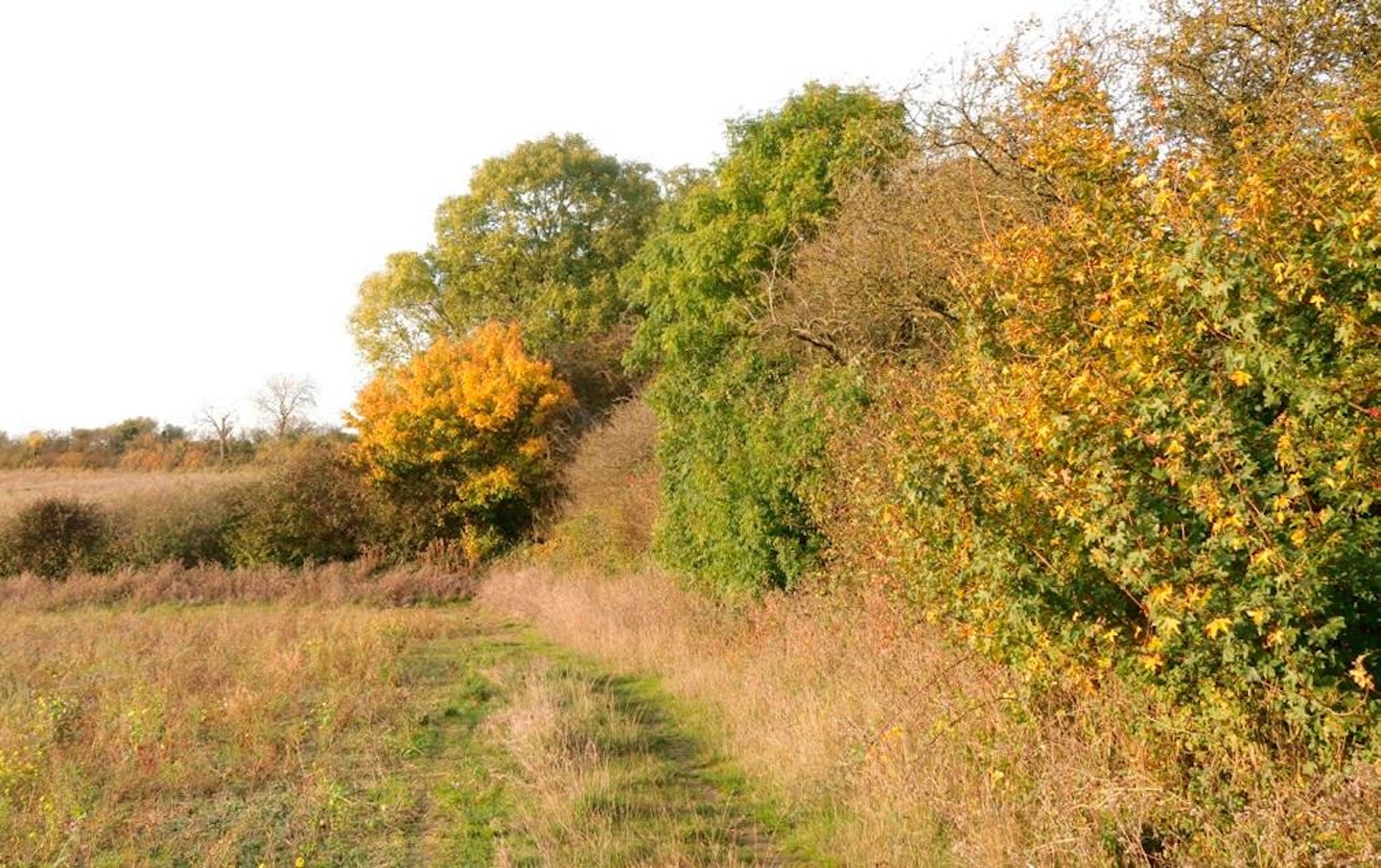
PETER’S PICKS: AUTUMNAL SCENIC PRODUCTS
Many scenic manufacturers produce autumn-themed scenic products. Woodland Scenics’ yellow Flowering Foliage and packs are good for adding colour to hedgerows and gardens, as are the finely powdered Flowers packs, available in yellow, red, white and orange. Meanwhile, the same manufacturer also offers packs of fine coloured foam foliage, which needs to be separated into tiny pieces to represent leaves or foliage. Briar Patch Dry Brown, which is a natural twig-like material covered with brown fine turf, is handy for making autumn hedges, foliage on trees or just by using small pieces as low autumn vegetation.
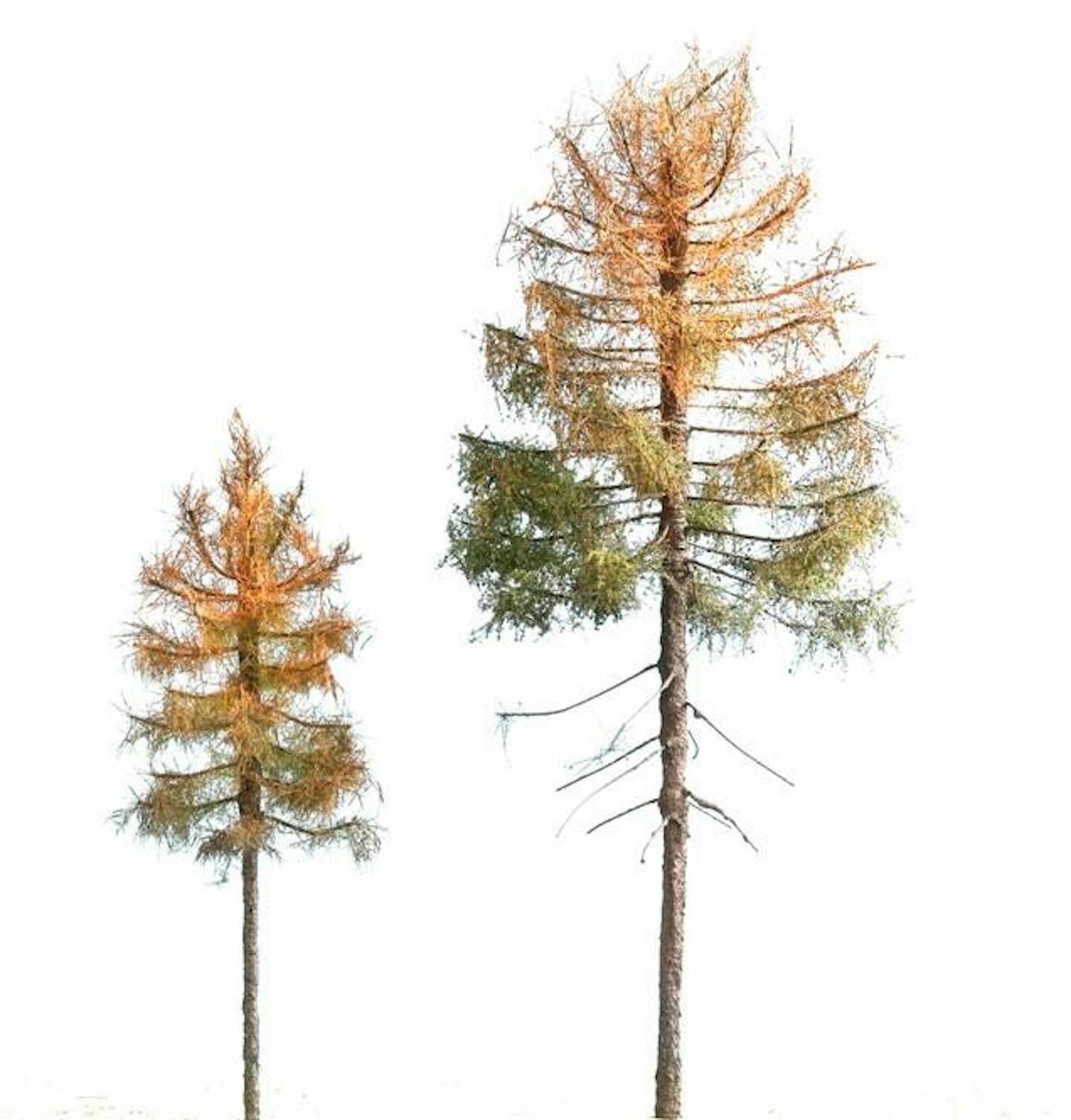
Heki autumn leaf packs feature several shades in one packet, and Polak produces very fine scatter materials in small plastic pots, including yellow and orange shades. As with all scatter materials, autumn colours need to be applied carefully – too many leaves and a tree will not look realistic Anita Decor autumn leaves have a good range of colours in one pack, although the leaves are a little coarser than those offered by Heki and Polak.

Magileaf is a natural, granular product that is good for mimicking tree and shrub foliage. Sold in nine different colours and textures (0.25mm or 0.5mm leaves), they can be applied like regular scatter material. Used sparingly, they give an excellent representation of individual leaves.
Model Scene is also a good source of autumn leaves, such as exquisite maple leaves. These are available from several retailers in the UK, including Model Scenery Supplies.
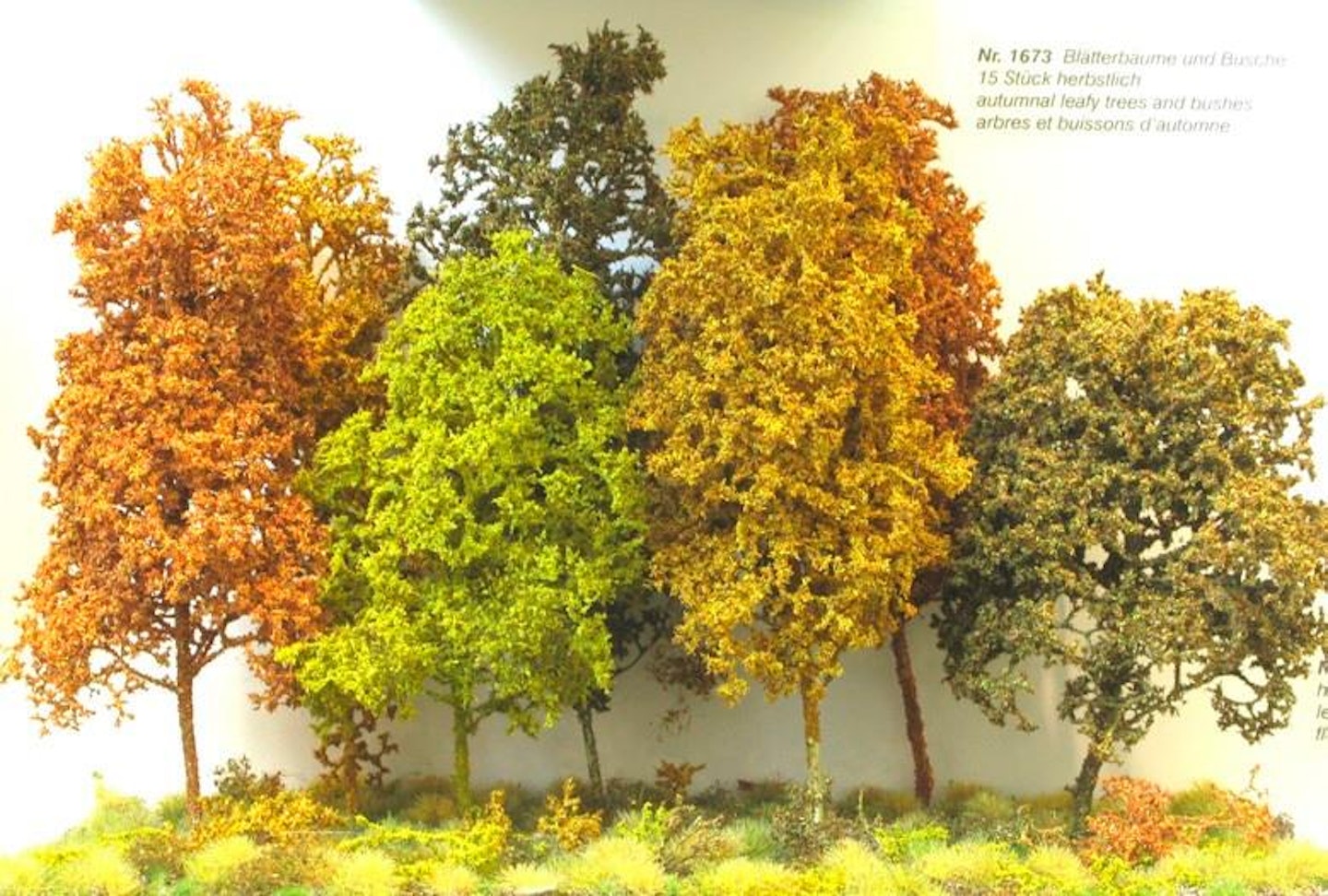
Primo Models is well known for its high-quality trees, bushes and grass tufts. Three different heights of dry larch trees are branches are well captured. Other species available – 8-12cm, 14-16cm and 18-20cm are available, including some with autumn – with foliage that has various shades of foliage, suitable for scales from ‘N’ up to green and light brown. The familiar sagging ‘O’ gauge.
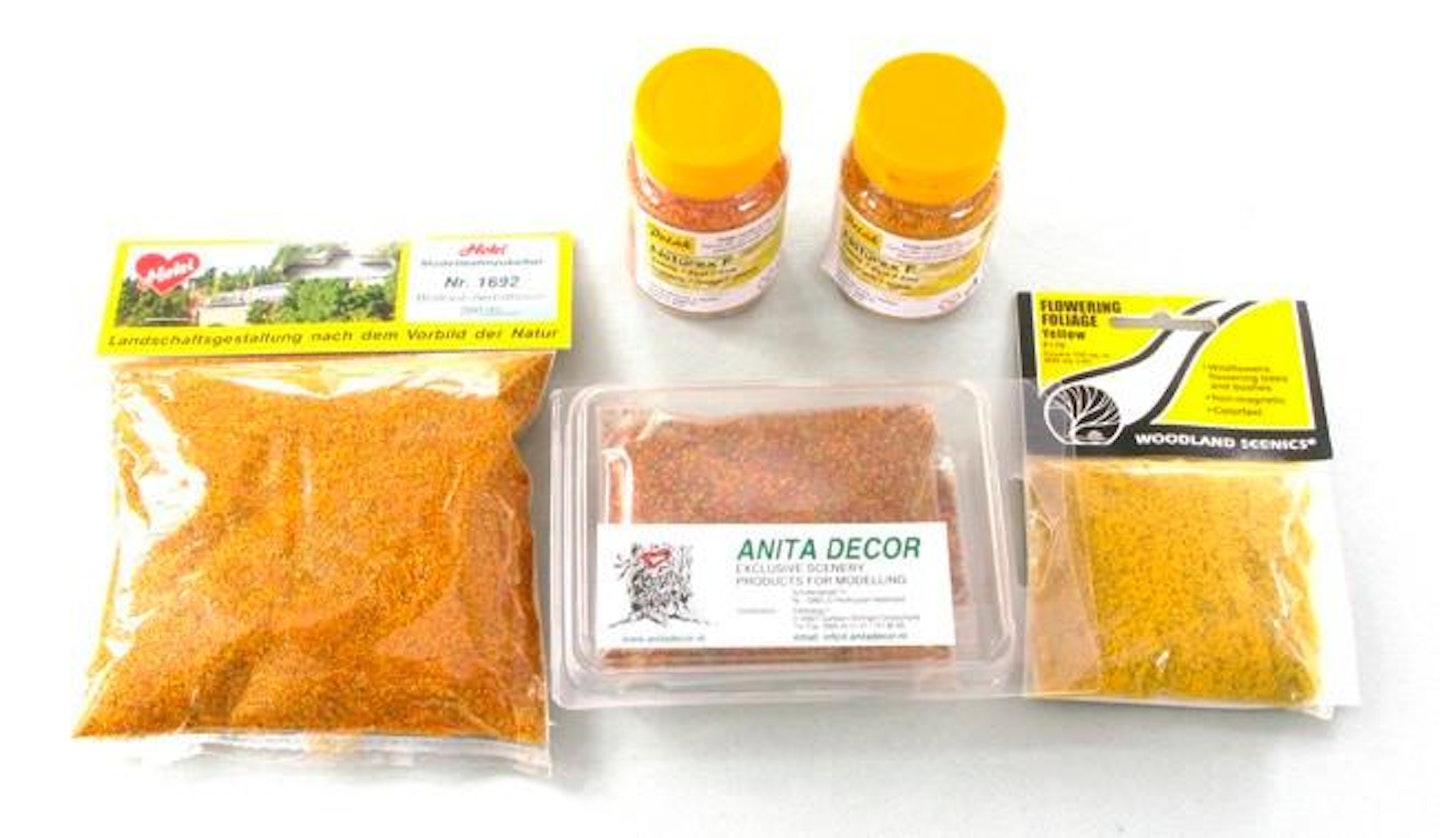
USEFUL WEBSITES
◆ Anita Decor: www.anitadecor.nl
◆ Heki: www.modelmasters.co.uk
◆ Magileaf: www.dcctrainautomation.co.uk
◆ Model Scene: www.modelscenerysupplies.co.uk
◆ Polak: www.polakscenics.co.uk
◆ Primo Models: www.primomodels.co.uk
◆ Woodland Scenics: www.bachmann.co.uk
◆ WW Scenics: www.wwscenics.com
IMPROVING READY-MADE TREES

I began by pulling away the original foliage, which only took a couple of minutes, revealing the bare skeleton of the tree.
There are many tree manufacturers making autumn seasonal models, although some may appear too vivid and gaudy. However, it’s possible to improve their appearance with a little work, replacing the supplied foliage, or simply adding different shades of scatter material over the top.
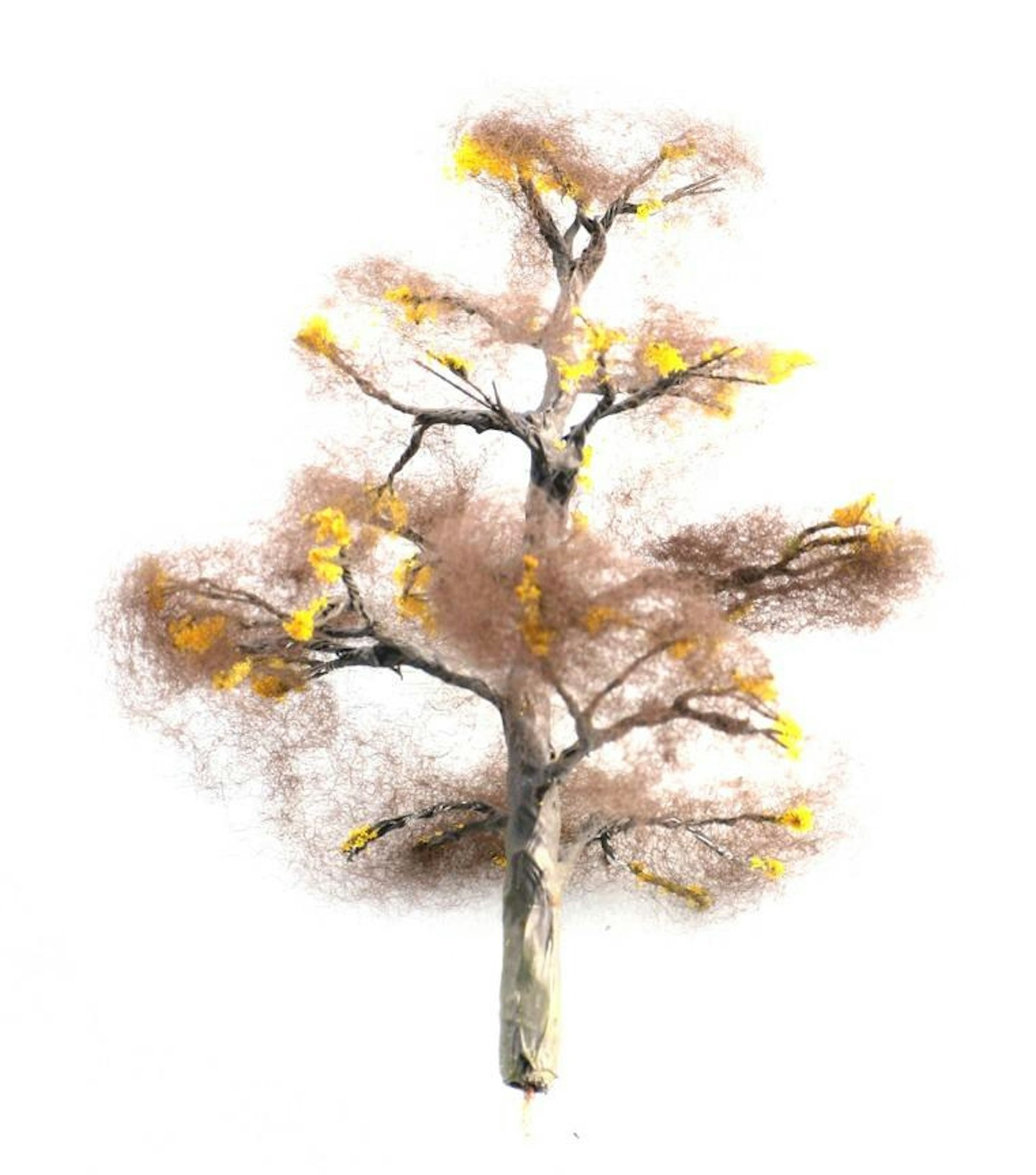
Brown poly fibre, from WW Scenics was then gently teased out and fixed to the branches with a light misting of extra hold hairspray.
Product: Woodland Scenics Premium Fall Maple Trees
Price: £20.50 (Pair)
Availability: Bachmann stockists
Web: www.bachmann.co.uk
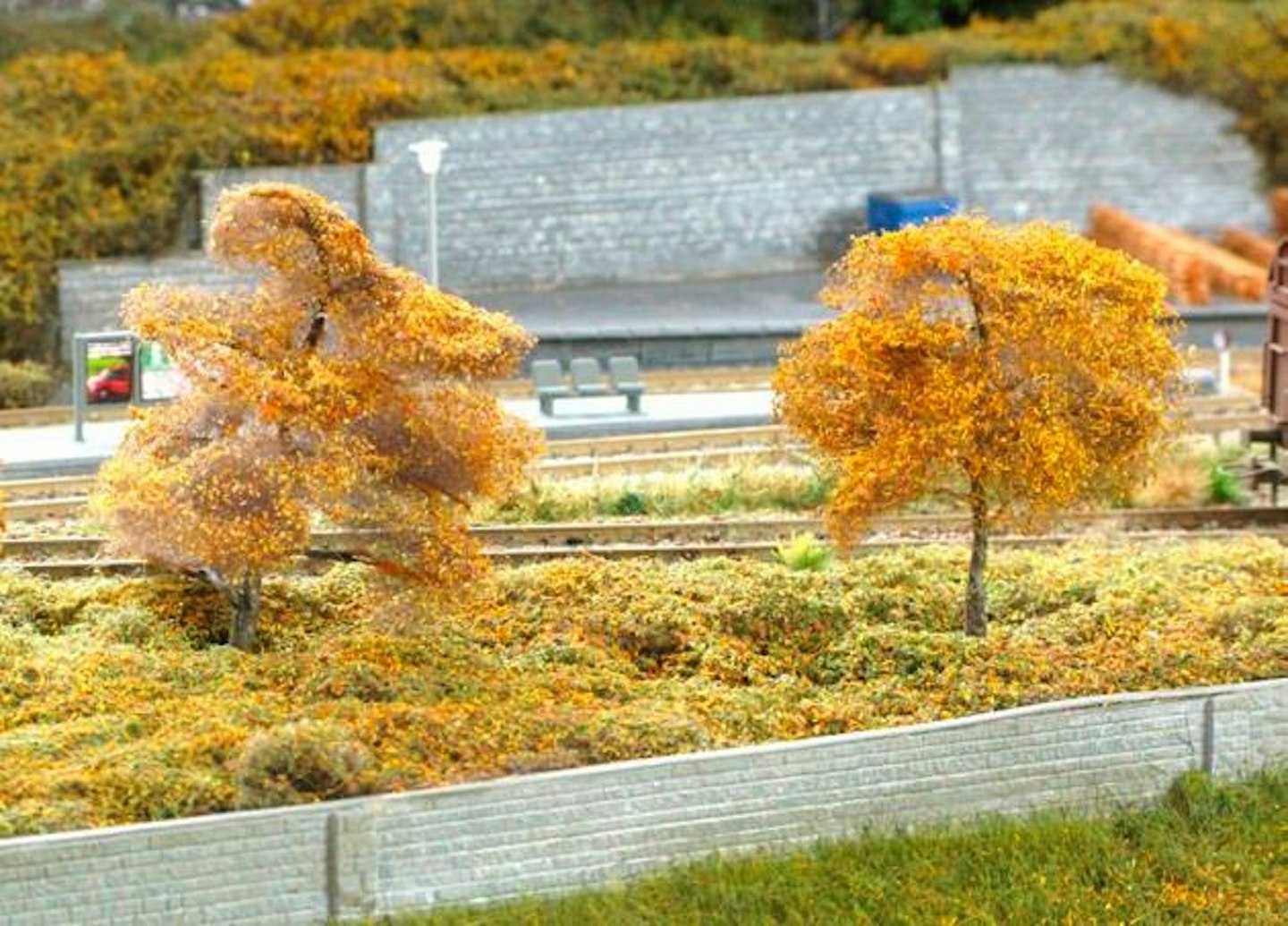
It didn’t take long before the Woodland Scenics trees were finished and planted into the scene. I was much happier with the subtle colouring and textures.

A blend of autumn coloured leaves of differing textures was created. The tree was sprayed with hairspray, and the leaves were lightly scattered into place.

This autumnal maple tree by Woodland Scenics has thick and bright foliage that was too vivid and dense for my tastes.
SEA MOSS TREES

With the sea moss trees prepared and pushed gently into a block of foam, they can be misted with an aerosol of dark grey acrylic paint.
Sea moss has the potential to make superb looking trees. Sort the contents of the box into pieces that look like full trees and those that are more suitable as bushes. Remove the seedpods and crush them between your fingers to create a useful natural scatter material that can be employed later.
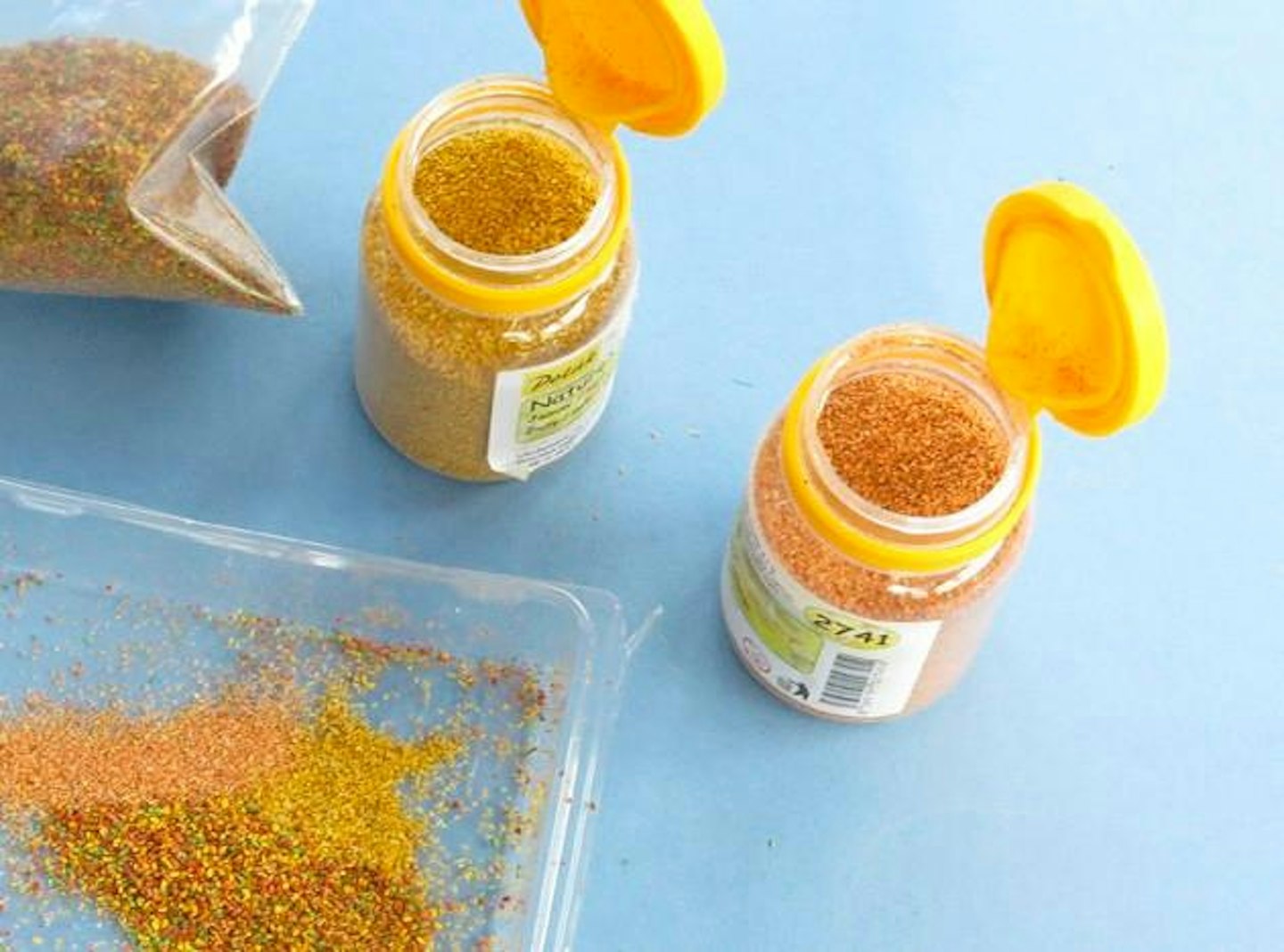
I created a blend of Anita Decor and Polak scatters in a plastic tray, aiming for a combination of shades and textures.
Sea moss is fragile, but it can be strengthened by soaking the material overnight in dilute PVA. Trees intended for foreground scenes can have the trunks thickened by brushing on a tree bark paste. When this is dry, spraying the sea moss with a dark grey or brown acrylic paint (from an aerosol) is also helpful, before the scatter material is applied.

When happy with the scatter materials’ coverage, a further coat of hairspray seals the foliage in place.
With a production process, it’s possible to create a small forest’s worth of sea moss trees in far less time than other ‘make your own’ tree kits.
Once complete, plant the tree by drilling or punching a suitable hole into the landscape, pushing the truck in gently and bonding with PVA glue.
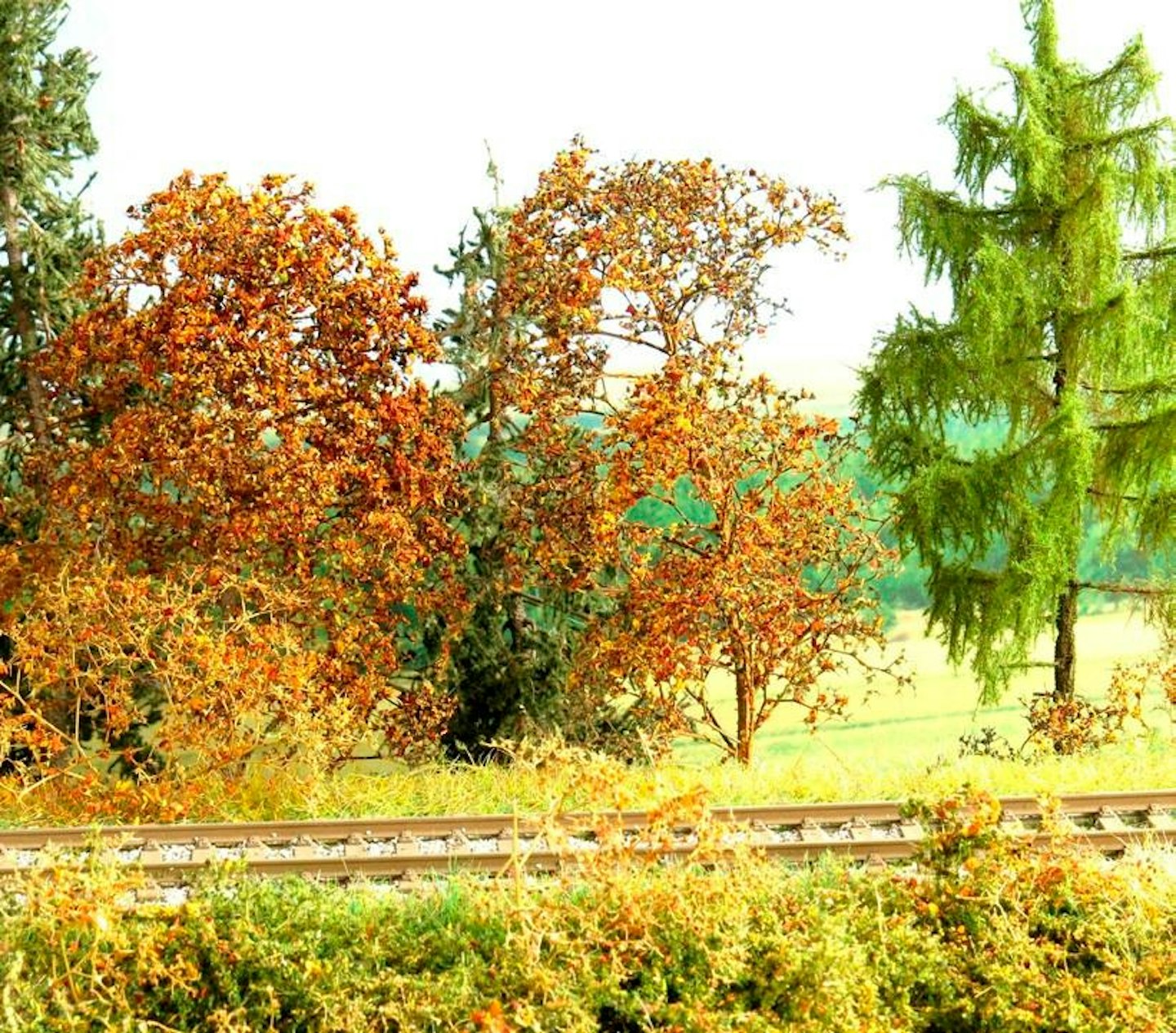
Planted into the scene, the sea moss trees provide a welcome array of tones and textures, contrasting with neighbouring evergreen tree species from the Primo range.
Products: Forest in a Box sea moss trees (£19.99), Flexi-Bark paste (£6.99)
Availability: Green Scenes
Web: www.green-scenes.co.uk
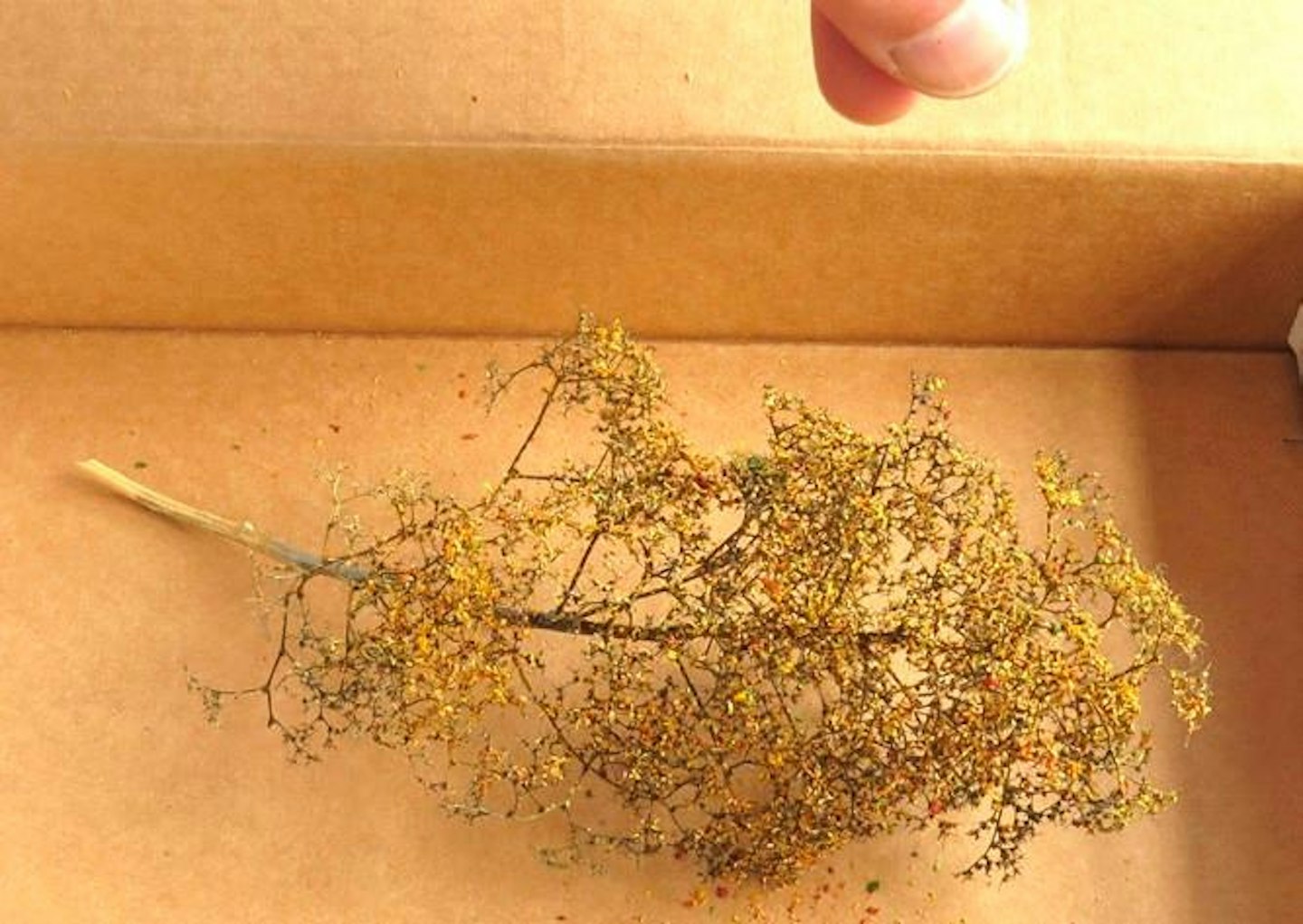
The sea moss was coated with extra hold hairspray and, working over a shallow cardboard box, the scatter blend was sprinkled over the tacky adhesive.
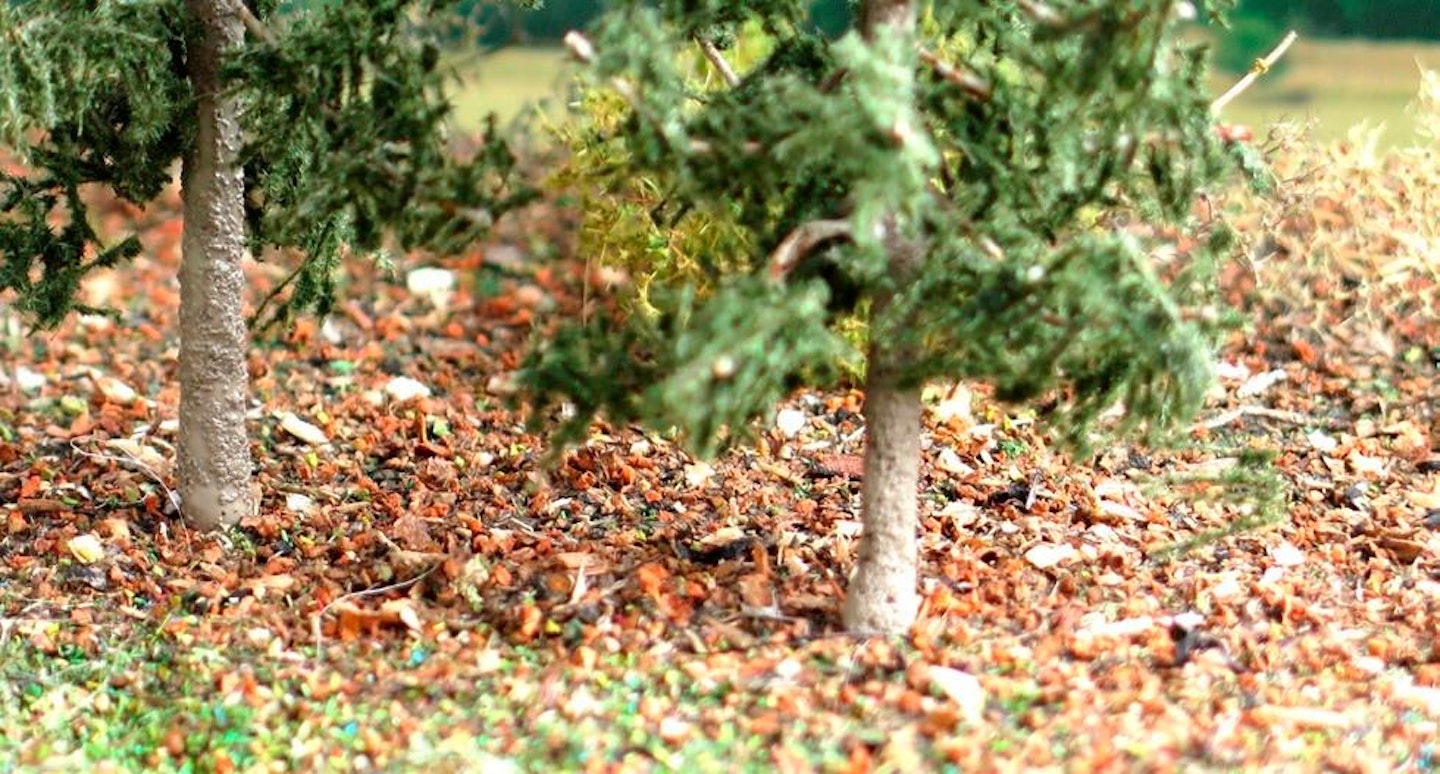
The seed pods, which have to be removed from the sea moss before use, can be crushed and used as a scatter material around the bases of trees.
PETER’S TOP TIP
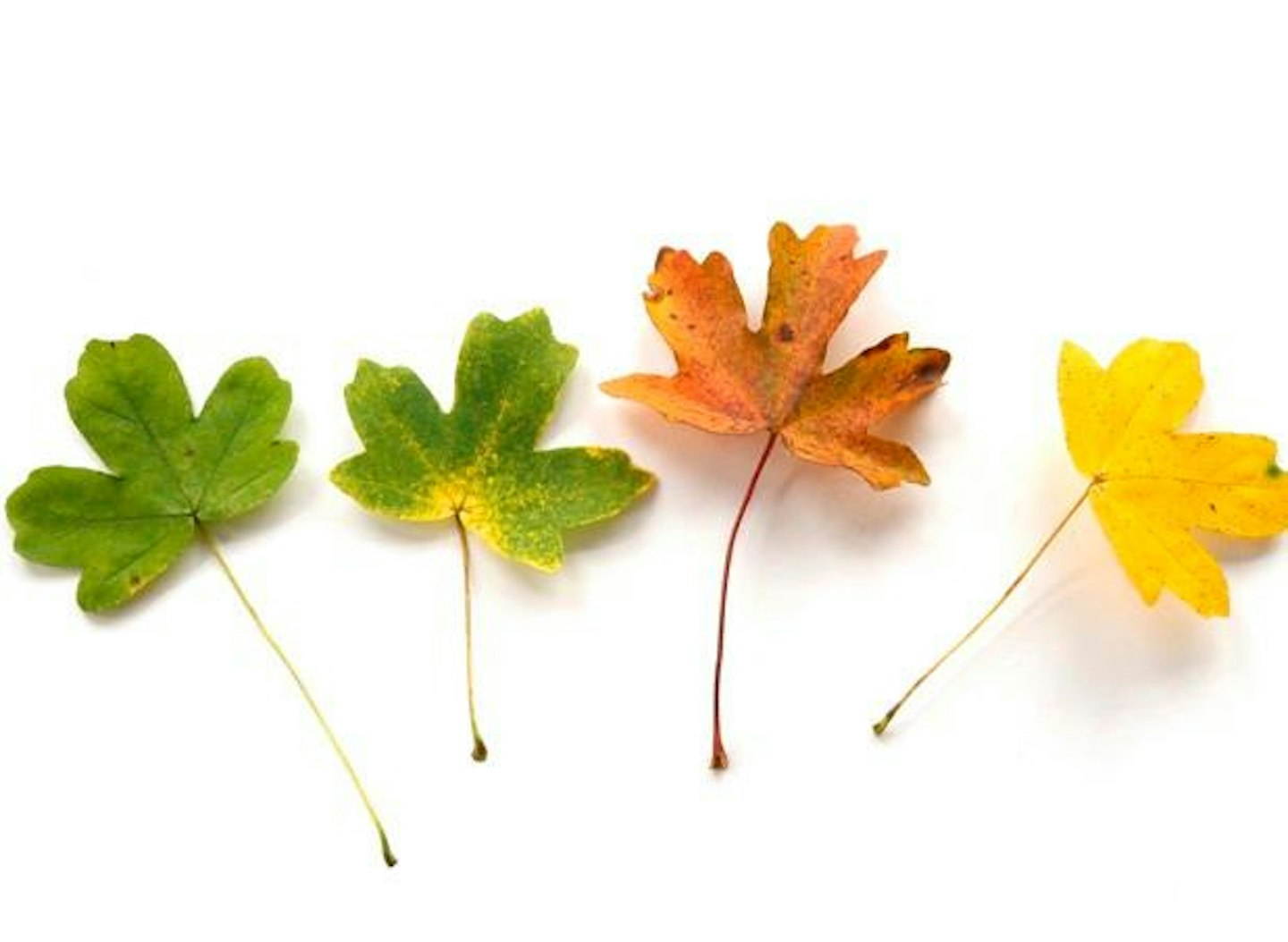
It is worth studying leaves that have fallen to the ground in autumn to see what colour shades are found in the natural world. This image shows four leaves dropped by a maple tree last October, charting the transition from green to yellow and red/brown. The challenge is reproducing these shades in miniature without the colours being too bright.
CREATING AUTUMN BRACKEN
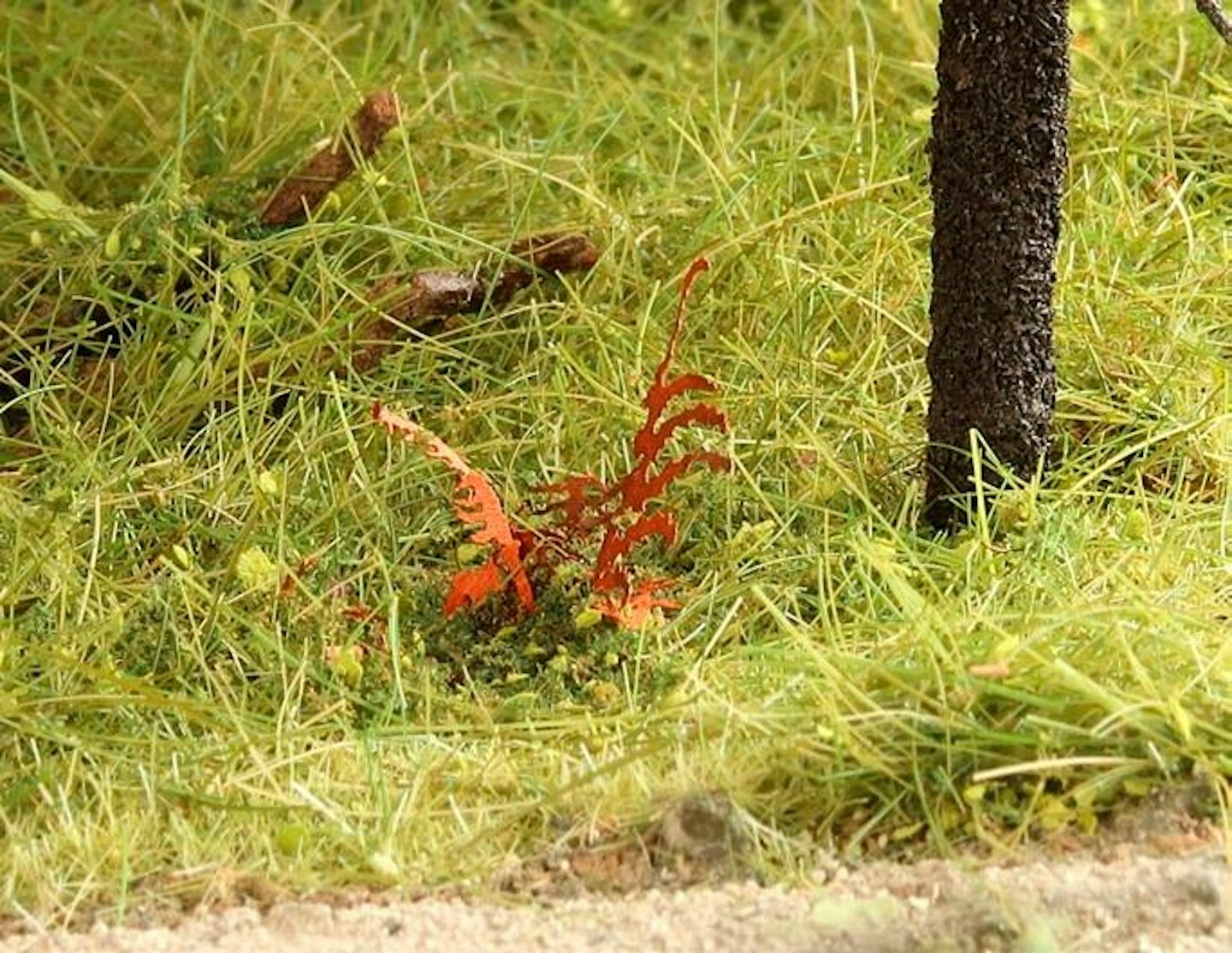
The brown bracken was positioned near the base of a tree, next to a path. Not all bracken turns brown at the same time, so a blend of green and brown can be seen together.
In real life we see bracken and ferns in many locations, especially close to woodland or along the sides of railway cuttings or embankments. Packs of laser-cut bracken and ferns are available from Scale Model Scenery and Model Scene, in either summer green or autumn brown.
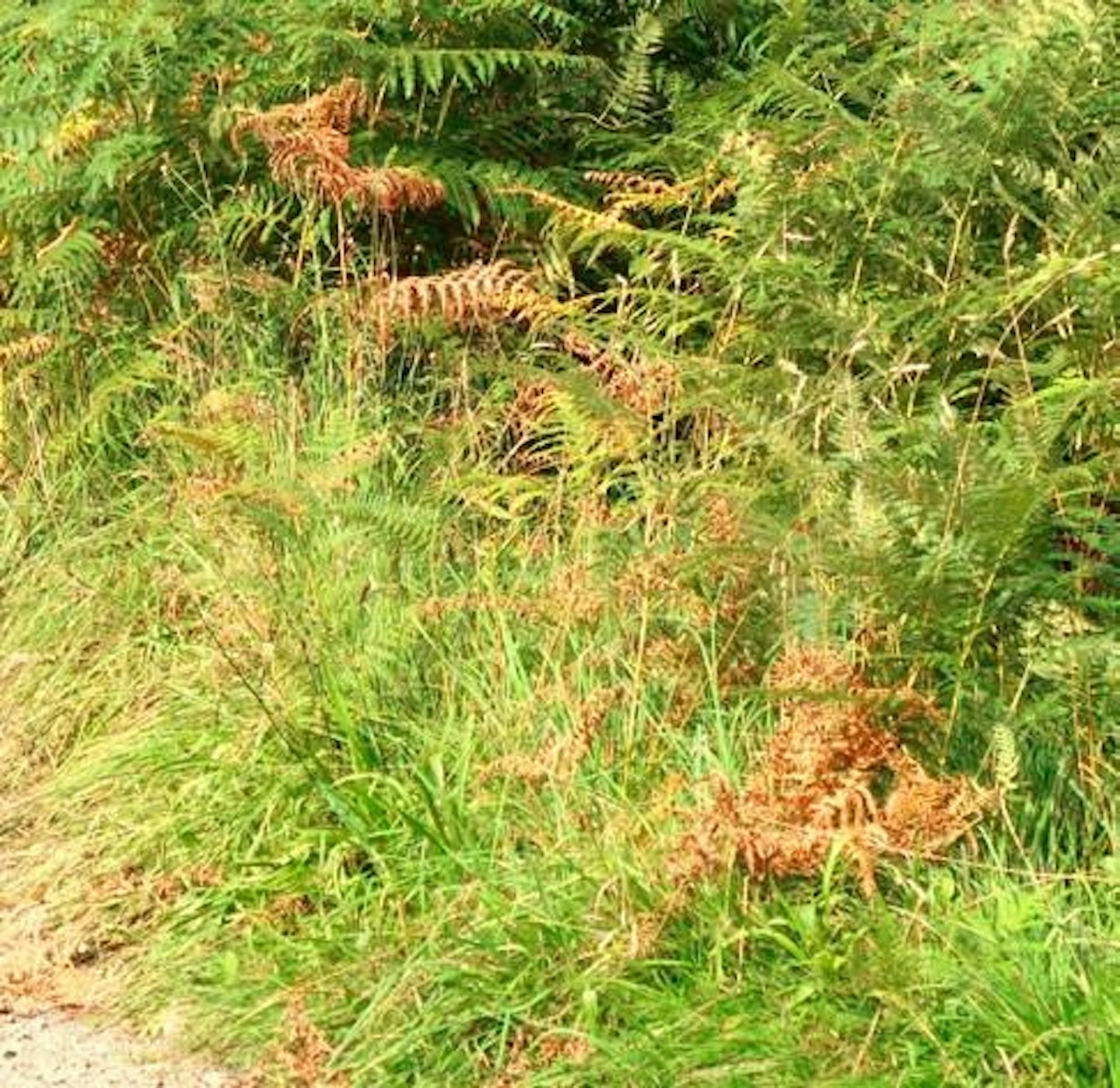
Even in late summer not all bracken is green. This image was taken in August, in the English Lake District, and shows a mixture of green and dry brown bracken.
The individual plant fronds are easy to cut from the backing sheet with a sharp knife and teased into suitable shapes with fingers or tweezers, before glueing into the landscape using a spot of PVA glue. Drop a little scatter material over any excess glue to disguise it.
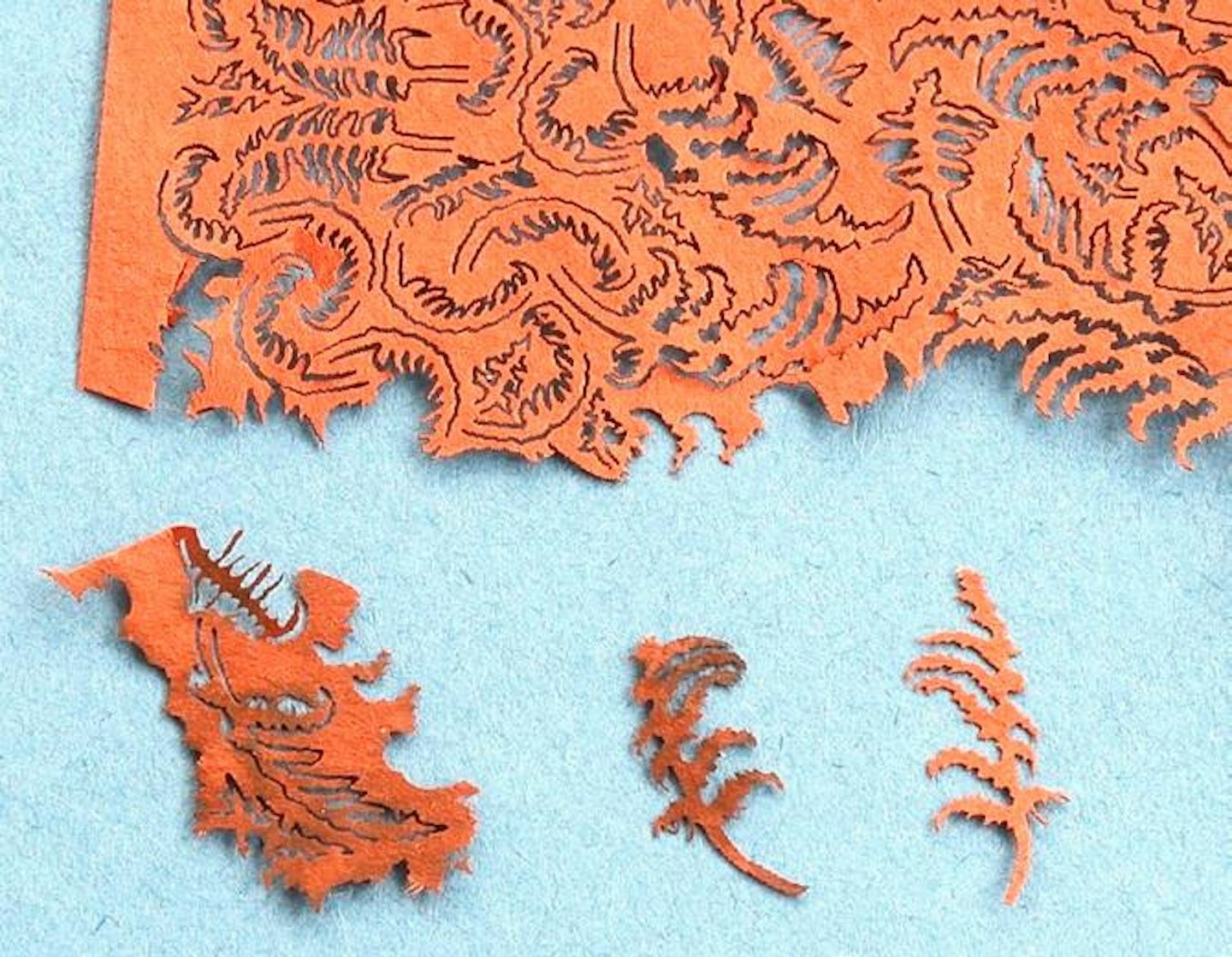
The individual fronds of Model Scene’s laser-cut bracken need to be cut from the fret with a sharp scalpel and teased gently into shape.
Product: Model Scene Bracken fern (VG7-030)
Price: £6.45
Availability: Model Scenery Supplies
Web: www.modelscenerysupplies.co.uk
